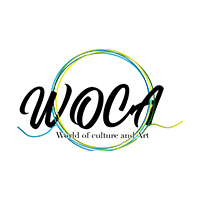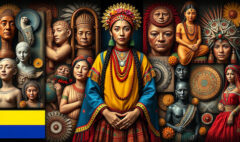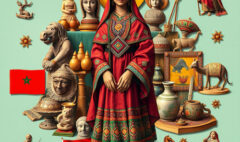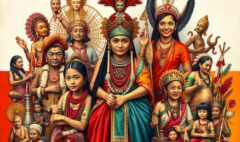The Vibrant Tapestry of Peru’s Indigenous Arts
The Vibrant Tapestry of Peru’s Indigenous Arts
Peru, a land of ancient civilizations and rich cultural heritage, boasts a remarkable tradition of indigenous arts that continues to thrive and evolve to this day. As an expert in Peruvian cultural studies, I’m excited to take you on a journey through the colorful world of Peru’s indigenous arts. From intricate textiles to stunning ceramics, these art forms not only showcase the incredible skill and creativity of Peru’s native peoples but also serve as a living link to their ancestral wisdom and traditions.
The Roots of Peru’s Indigenous Arts
The story of Peru’s indigenous arts begins thousands of years ago, with civilizations like the Chavín, Moche, and Inca leaving behind a legacy of artistic excellence. These ancient cultures developed sophisticated techniques in weaving, metalwork, and pottery that continue to influence Peruvian artists today. The endurance of these artistic traditions through centuries of change is a testament to their cultural significance and the resilience of Peru’s indigenous communities.
Textiles: Weaving Stories and Identities
Peruvian textiles are perhaps the most renowned of all Peru’s indigenous arts. The country’s weaving tradition dates back over 5,000 years, with each region developing its own unique styles, patterns, and techniques. From the vibrant ponchos of the Andean highlands to the intricate tapestries of the coastal regions, Peruvian textiles are more than just beautiful objects – they’re wearable stories that communicate cultural identity, social status, and even cosmic beliefs.
The art of weaving in Peru is deeply intertwined with daily life and spiritual practices. Many indigenous communities still use traditional backstrap looms to create textiles, a technique passed down through generations. The patterns and motifs used in these textiles often represent elements of nature, deities, and important cultural symbols, serving as a form of non-written language that preserves ancestral knowledge.
Ceramics: Shaping Culture in Clay
Pottery is another cornerstone of Peru’s indigenous arts, with a history stretching back to pre-Columbian times. The diversity of Peruvian ceramics is astounding, ranging from the naturalistic pottery of the Moche culture to the geometric designs of Inca ceramics. These vessels were not just functional objects but also played important roles in religious ceremonies and as a means of recording history and cultural beliefs.
Today, Peru’s indigenous pottery traditions continue to thrive in communities across the country. In the Amazon region, for example, artisans create beautifully painted ceramics using natural pigments and ancient firing techniques. Meanwhile, in the Andes, potters produce distinctive styles like the famous Chulucanas pottery, known for its unique black and white designs.
Peru’s indigenous arts have always been deeply rooted in the natural world, with artisans drawing inspiration from their environment and using locally sourced materials. This connection to nature is not just aesthetic but also spiritual, reflecting the indigenous worldview that sees humans as an integral part of the natural order.
Metalwork: Gleaming Treasures of the Andes
The metalworking traditions of Peru’s indigenous cultures are truly awe-inspiring. From the intricate gold work of the Moche to the sophisticated silver jewelry of the Inca, Peruvian metalsmiths have long been renowned for their skill and artistry. These ancient techniques continue to be practiced today, with contemporary artisans creating stunning pieces that blend traditional motifs with modern designs.
Gourd Art: Nature’s Canvas
An often-overlooked but fascinating aspect of Peru’s indigenous arts is mate burilado, or gourd art. This unique craft involves intricate carving and pyrography (burning designs) on dried gourds. Originating in the coastal regions of Peru, gourd art often depicts scenes from daily life, local legends, and important cultural events, serving as a form of visual storytelling.
Wood Carving: Bringing Spirits to Life
Wood carving is another important tradition in Peru’s indigenous arts, particularly in the Amazon region. Skilled artisans create intricate masks, figurines, and ritual objects that play crucial roles in religious ceremonies and cultural celebrations. These wooden artworks often represent spirits, animals, and mythological beings, reflecting the rich spiritual world of Peru’s indigenous peoples.
The Evolution of Peru’s Indigenous Arts
While rooted in ancient traditions, Peru’s indigenous arts are far from static. Contemporary indigenous artists are finding innovative ways to blend traditional techniques with modern influences, creating works that speak to both their cultural heritage and current realities. This evolution ensures that Peru’s indigenous arts remain vibrant and relevant in the modern world.
Preserving Traditions, Empowering Communities
Efforts to preserve and promote Peru’s indigenous arts are crucial not only for cultural heritage but also for the economic empowerment of indigenous communities. Many initiatives support artisans by providing access to markets, fair trade practices, and opportunities for skill development. These programs help ensure that traditional art forms continue to thrive while providing sustainable livelihoods for indigenous artists.
The Global Appeal of Peru’s Indigenous Arts
Peru’s indigenous arts have gained significant recognition on the global stage, with collectors and museums worldwide seeking out these unique cultural treasures. This international appreciation has helped raise awareness about Peru’s rich cultural heritage and the importance of supporting indigenous artists and their communities.
Challenges and Opportunities
Despite their cultural significance and global appeal, Peru’s indigenous arts face challenges such as the loss of traditional knowledge, competition from mass-produced imitations, and the migration of younger generations to urban areas. However, these challenges also present opportunities for innovation and cultural revitalization, as communities find new ways to preserve and celebrate their artistic heritage.
Conclusion: A Living Legacy
Peru’s indigenous arts represent a living legacy of creativity, skill, and cultural wisdom. From the intricate patterns of Andean textiles to the bold designs of Amazonian pottery, these art forms continue to captivate and inspire people around the world. As we appreciate and support Peru’s indigenous arts, we not only contribute to the preservation of invaluable cultural traditions but also help ensure that these vibrant artistic expressions continue to evolve and thrive for generations to come.











